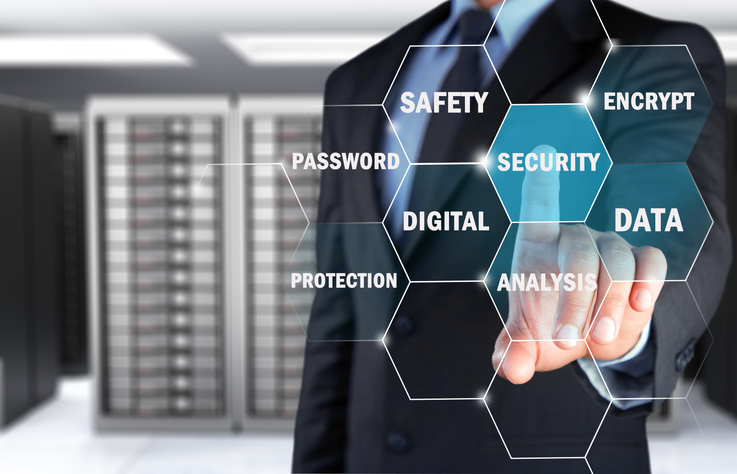3 min read
Securing Networks: The Ultimate Guide to Cybersecurity in Networking
Cybersecurity Networking: Safeguarding Digital Assets in the Connected WorldIn today's technology-driven era, where interconnected systems and...
4 min read
 The Amazing Team at Force One
:
Apr 11, 2024 11:17:34 AM
The Amazing Team at Force One
:
Apr 11, 2024 11:17:34 AM
In the tapestry of today’s digital ecosystem, the threads of network security are woven with both diligence and innovation. Remember the last time you heard about a data breach in the news? It felt like a cold shiver down the spine of the digital world, reminding us of the paramount importance of securing our networks. As we dive deeper into the digital age, where data is the new gold, securing our network operations is not just an option; it’s a necessity. Through this guide, we embark on a journey to fortify our digital frontiers, exploring the realms of secure network protocols and how their implementation can shield our most valuable assets. Let’s unravel the mysteries of network security together, turning daunting challenges into milestones of our cybersecurity adventure.
Understanding Network Operations and Security
Network operations encompass the heartbeat of our digital existence. From the simple act of browsing the internet to executing complex business transactions online, every digital interaction relies on a seamless and secure network operation. However, as our reliance on digital platforms grows, so does the sophistication of threats against them. This evolution calls for a robust application security strategy, ensuring that each application we interact with is fortified against potential breaches.
I recall a conversation with a network administrator who likened network operations to a city's infrastructure, with application security serving as the law enforcement ensuring peace and order. This analogy struck me as particularly apt, highlighting the importance of proactive security measures in maintaining the integrity and reliability of our digital cities.
Useful Tips:
The journey through the labyrinth of network security is fraught with challenges, yet, equipped with the right knowledge and tools, we can navigate it successfully.
The Role of Secure Protocols in Protecting Data
Imagine a world where every piece of information you send is an open book, visible to anyone who wishes to peek. This was the reality before the advent of secure protocols, which now serve as the encrypted tunnels through which our data travels safely. Secure protocols, such as SSL (Secure Sockets Layer), TLS (Transport Layer Security), and SSH (Secure Shell), are the guardians of data integrity and confidentiality. They ensure that the data sent between your browser and websites, or between different systems, is encrypted and unreadable to prying eyes.
Using SSL as an example, think of it as a sealed envelope for your letters. Only the recipient has the key to open it, keeping the contents private and intact. Implementing SSL/TLS for a website is akin to putting a lock on your mailbox, a simple yet effective measure to prevent unwanted access.
Useful Tips:
The implementation of these secure protocols is a testament to our commitment to safeguarding digital data. It's a crucial step in building trust in the digital world, ensuring that our online interactions are protected from the shadows.
Implementing Secure Remote Access
The shift towards remote work has underscored the importance of secure remote access to network resources. The challenge here is not just about connecting to the network from anywhere but ensuring that this access is as secure as if one were physically present in the office. Virtual Private Networks (VPNs), secure login methods, and multi-factor authentication play pivotal roles in achieving this security.
A VPN creates a secure, encrypted connection over a public network, effectively extending the corporate network to remote users. It's like having a private tunnel through the chaos of the internet. Moreover, multi-factor authentication adds an extra layer of security by requiring users to verify their identity in more than one way before granting access.
Useful Tips:
Let's draw inspiration from those who have navigated the treacherous waters of network security and emerged victorious. A notable example is a leading financial institution that faced relentless cyber threats. By implementing a robust combination of TLS encryption for data in transit, multi-factor authentication for user access, and comprehensive network monitoring, they significantly reduced their vulnerability to cyberattacks.
Another example is a tech giant that utilized VPNs to secure remote access for its global workforce. This not only ensured the safety of their data but also maintained high productivity levels among employees working from various corners of the globe.
Useful Tips:
Securing your network is an ongoing journey, filled with challenges but also opportunities to strengthen your defenses against the ever-evolving landscape of cyber threats. By understanding network operations, implementing secure protocols, ensuring secure remote access, and learning from real-world implementations, you're well on your way to building a digital fortress.
Key Takeaways:
For those intrigued by the vast world of cybersecurity and eager to deepen their knowledge, exploring further education, such as a cybersecurity bootcamp, can be an invaluable step. It's not just about securing your network; it's about securing the future of your digital landscape.
Also Read: Cybersecurity Essentials: Creating a Resilient Infrastructure
If you're interested in more job tips and ways to advance your career in the cybersecurity field, check out more details at ForceOne Cybersecurity. Together, we can build a safer digital future.

FAQs

3 min read
Cybersecurity Networking: Safeguarding Digital Assets in the Connected WorldIn today's technology-driven era, where interconnected systems and...

4 min read
Hello Cyber Enthusiasts! In today's online world, keeping our digital spaces safe is like locking our doors at night. It’s essential. Whether you’re...

5 min read
Network security is more critical today than ever before. With cyber threats on the rise, businesses need to ensure that their data and resources are...